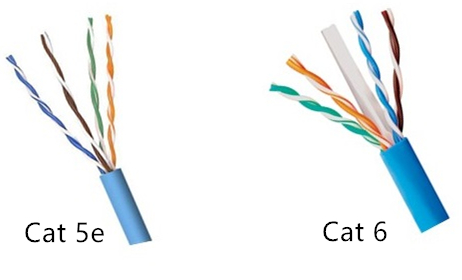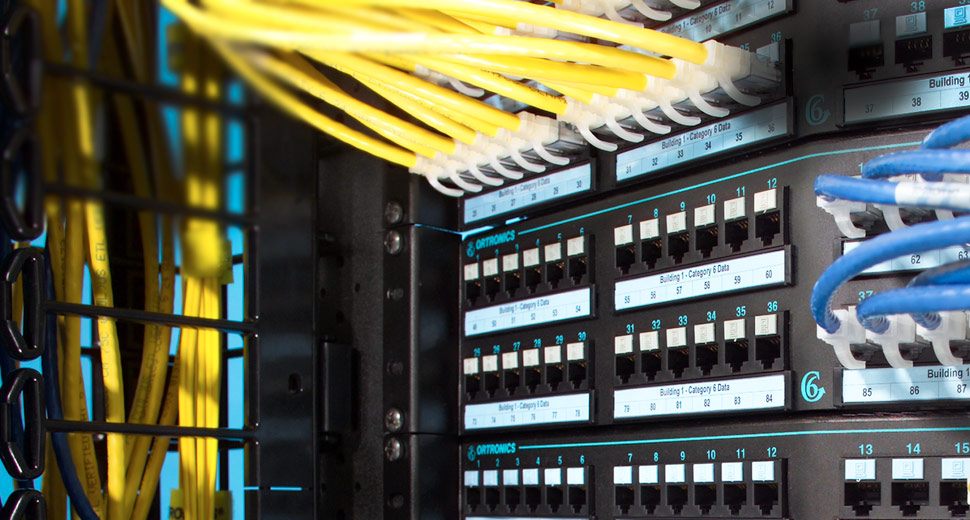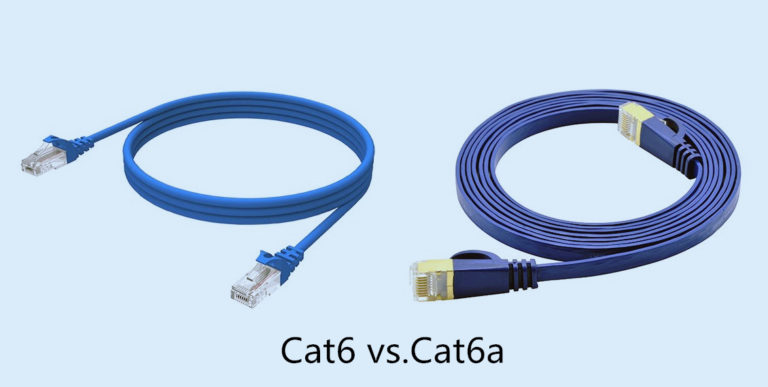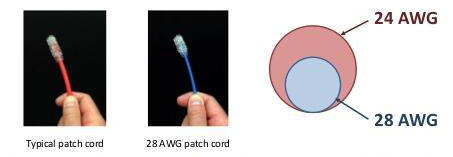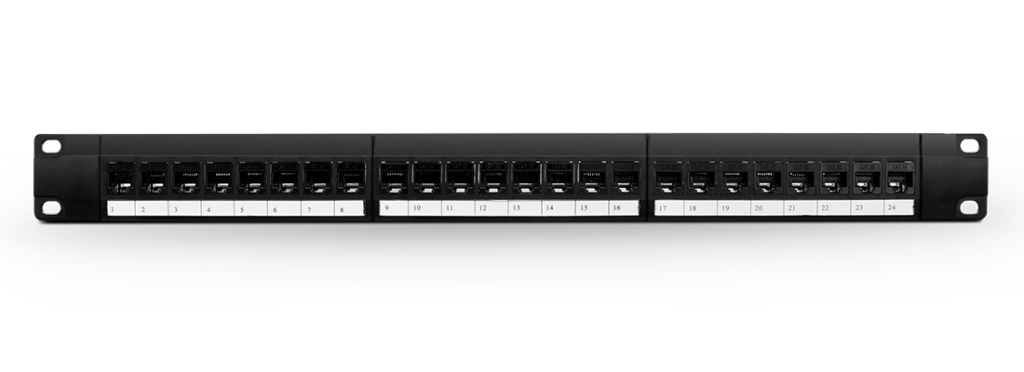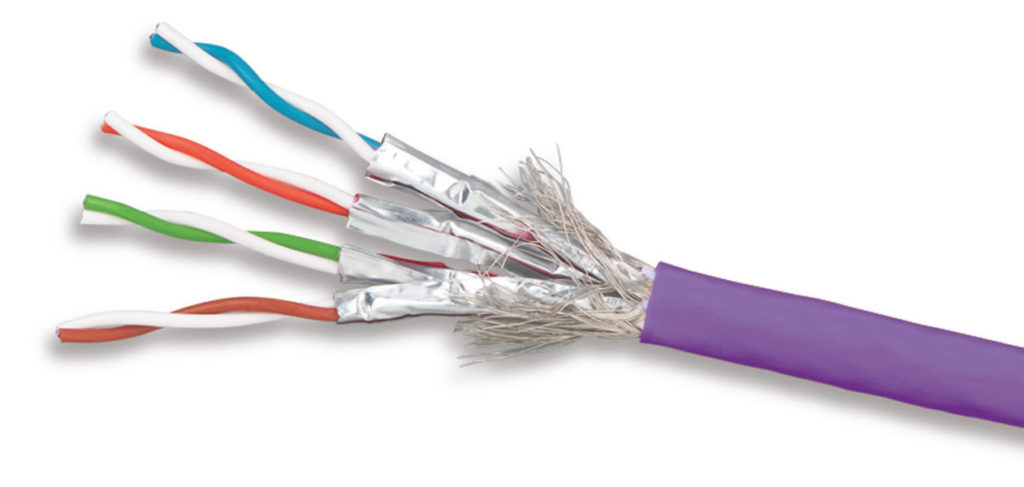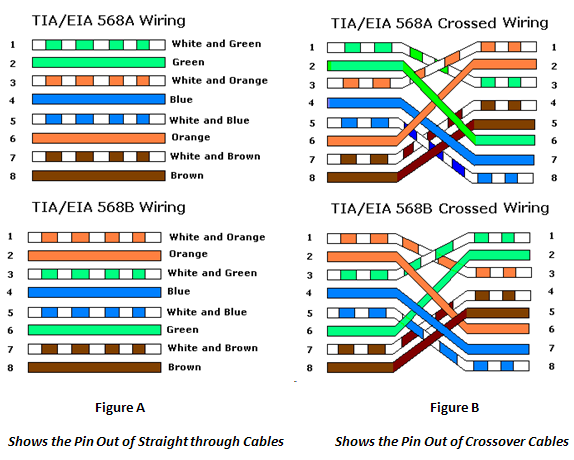At present, the Ethernet patch cable can be simply divided into shielded Ethernet cable and unshielded Ethernet cable, both of which have their features and advantages. Considering that, is there any difficulty for you to decide which one should be selected for deploying your network? Are you familiar with the two kinds of Ethernet patch cables? Is there any advantage of the shielded Ethernet cable, compare to the traditional unshielded one? In fact, using the shielded Ethernet cable allows for a better performance of your network, especially in the application with high EMI, which will be mainly introduced in the following text.
What Is the Shielded Ethernet Cable?
Shielded Ethernet cable is an enhanced version of unshielded Ethernet cable, which features a shield inside usually made up of copper tape, a layer of conducting polymer or a copper or aluminum braid, with the aim of reducing the EMI (Electromagnetic Interference). Generally, there are several kinds of shielding like braided shield, screening and foil to be applied for each pair in the cable and all pairs together, which makes various shielded Ethernet cables available on the market and popularly used among users, for instance, STP (shielded twisted pair), SSTP (screened shielded twisted pair) and FTP (foil twisted pair) cables. To better know the internal structure of the shielded Ethernet cable, you can learn it from the following figure.
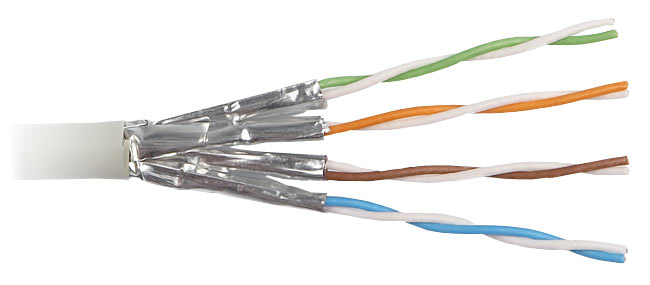
Why Shielded Ethernet Cable Is Used?
It is well known that EMI, also referred to as FRI (radio frequency interference), can be produced by an external source affecting an electrical circuit by electrostatic coupling, electromagnetic induction, or conduction when the data is transmitted in our network. If the EMI is very high in your network, the data transmission errors may occur. Then how to ensure your network performance?
In general, the external source can be made by natural sources like sun and thunder storms or man-made sources like vehicle ignition systems and cell phones, which would exist in our everyday life and cannot be avoided. Taking this into account, we can only turn to other solution to directly reduce or avoid the EMI for ensure the transmission quality of our network. At first, the Ethernet cable with unshielded feature is designed with twisted pairs inside the cable to reduce the EMI, which performs not very good and doesn’t meet our expectation. Fortunately, experts soon put forward another method to resolve the issue—the shielded Ethernet cable, as one of the most used solution to protect our network from EMI.
What Are the Differences Between Shielded and Unshielded Ethernet Cable?
First and foremost, the shielded Ethernet cable performs better than the unshielded Ethernet cable in reducing the EMI, which greatly ensures the the data transmission quality of the devices most commonly used in buildings, such as microwave equipment, HVAC (Heating Ventilation Air Conditioning) systems and radio transmitters. It also has the ability to decrease the interference generated from devices like power tools and vacuum cleaners. Moreover, using the shielded Ethernet cable can prevent the signals from passing through the outer coating and entering nearby wires by accident for its special shielded structure, hence the crosstalk in the network can be reduced or even avoided.
In contrast to the unshielded Ethernet cable, there are also some disadvantages for the shielded Ethernet cable that should be paid attention to when choosing the Ethernet patch cable. Firstly, choosing the shielded Ethernet cable to deploy your network will cost higher than the unshielded one. Because both the manufacturing cost of itself and its related device for network deployment are more expensive than that of the unshielded one. Secondly, due to its complicate, shielded feature, you should pay more time and money for the installation and maintenance. And it would be difficult to restored if it is damaged because the shielding is quite fragile and rigid. Thirdly, the shielded Ethernet cable is more thicker that makes itself not so flexible as the unshielded one. If you should deploy the network in narrow space, the shielded Ethernet cable has no advantage over the unshielded one.
Conclusion
The shielded Ethernet cable is really a cost effective solution for the applications where the EMI is very high, which can greatly improve your network performance and extend the life span of your equipment. Although it costs much higher than the unshielded one, is more difficult to install and maintain, and is not so flexible, it can perform better to reduce the EMI when put into use. Beside, the unshielded Ethernet cable is still recommended for you if the EMI around your network is not a risk.
